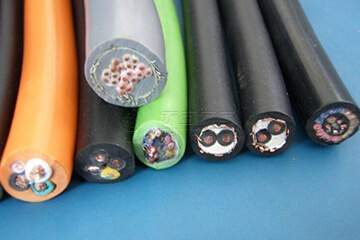The production and technical standards of branch cables
The branch cable production branch cable is developed on the basis of ordinary plastic cable. Due to the development of modern civilization, high-rise buildings in cities have become more and more popular. In the electrical design of high-rise building power distribution systems, power supply reliability, engineering economy, and construction convenience are becoming more and more important. Common power cables are used for power supply. It is always difficult to completely unify contradictions, and can only be emphasized according to different projects. According to the traditional method, in the floor power distribution design, there are usually three methods:

A.
Radial, direct power supply from underground power distribution room to lead cables on each floor. This method has the best reliability, but requires a large number of aaac cables, bridges and larger cable wells, high cost, and worst economical.
B.
Link method, the cable is led from the power distribution room to the bottom distribution box, and then the bottom layer is connected layer by layer to supply power. This method is the most economical, but because the number of layers is more, the safety system is lower, and the number of safety systems is gradually increased. The levels are multiplied, and therefore, the reliability is the worst.
C.
Partitioned trunk type, a high-rise building is divided into n unit areas, each unit uses cables to supply power from the power distribution room, and then distributed to each floor in the unit area. This method is more reliable and economical, and is often used.
D.
Trunk cable branching method. One or several trunk cables are drawn from the power distribution room, and each floor is branched on the trunk cable. This method is the most economical and theoretically has the equivalent reliability of radial power distribution. But construction is the most troublesome. What’s more troublesome is that when the floor branch is made on the main cable, it is affected by the structure of the cable, on-site construction conditions and the quality of the personnel. The quality of the joints is uneven, and the reliability of the actual operation is not satisfactory. However, this method makes People thought of making joints and cables together, which gave birth to a new generation of building power distribution cables—branch cables.
Branch cable is a single-core power cable that has been specially processed as the backbone of the building. According to the structural characteristics and dimensions of each specific building, the branch connector is designed and manufactured together with the branch line and the backbone cable in advance. The on-site construction and management work in the above method (4) is completed by a professional manufacturer, which greatly improves the reliability of the joint, and the consistency of the process also brings consistent quality, to achieve the purpose of ensuring operational reliability.
Branch cables appeared earlier in the United Kingdom and Japan. In terms of technical standards, in 1980, the Japan Wire Industry Association promulgated the first industry standard JCS376 (1980). With the development and progress of technology, the standard was implemented in 1992. It has revised, relaxed the requirements for product structure materials, and improved the technical indicators of finished products. At present, the product standards of the domestic formal branch cable manufacturers are mainly based on this standard. Health and technical standards